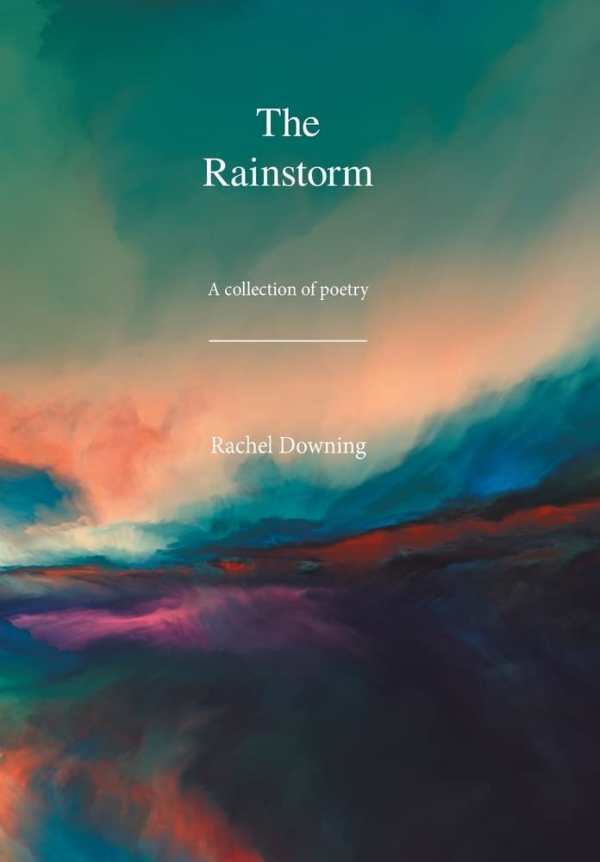
The Rainstorm
The mysterious free verses collected in The Rainstorm explore the power of language and the paradoxes of the self.
Rachel Downing’s poetry collection The Rainstorm delves into a world of opposing forces centered in the self.
The opening poem, “Doubt,” presents the central tension of the collection, enacting an internal conversation between a doubting, fractured self and a more confident, integrated self. Here, the act of writing creates a permanent pathway between those two states, one that can be returned to, abandoned, and returned to again “until I find it here written / until I find the healing tears of my words.”
This internal “method of dialectic” provides a structure for many poems in the book, including the long entry “A Minimalist Reduction”:
until a formal typewritten stop
accomplishes the affirmation
of my viability and functional existence
thinking constructed and unaware
the still intention before the first person
for this conscious purpose and sentence.
The poems are written in free verse, without meters or rhymes. The voice in most poems is an explicit first person “I” who is drawn “in a dark and sorrowful dialectic” to intimate conversations with themselves, often expressing a profound alienation from others, as in “A Living Wake”:
When they still
in freedoms
And absent conscience spoke
so was my soul struck stillborn
Still born distinct in disunity
a living wake.
Given the consistency of the voice, the collection’s variety in terms of the poems’ lengths is welcome. Some poems run on for several pages, while others are as short as a single line, taking on the form of aphorisms that stretch toward wisdom.
A limited number of poems provide some relief from the single perspective of the “I,” taking on a more distanced, imagist voice. One of the best examples of this style is “The Absent Sea”:
Stooping to the black night shore
gathering moonlight jewels
Pebbles and hopes thrown through
bare footsteps to follow
This shores’ sand pebbled sea
under the black night sky
In psychic frown
a forever harsh volumed sea
In a quiet awakening
cold dim shivers
The deep night waves
those sing the tales to fall
Through the absent sea
scored through with the absence.
Rich images are embedded in the first two sections, titled “Fractured” and “Existence.” The imagery becomes sparer in the remaining two sections. Elsewhere, striking similes result in added variety, as with “Shelter”: “I see the lies caught in illusions / a mirage of faces fall / like faces in a silent movie.”
Most of the book’s poems are lyrical, relying on images or abstract ideas to convey their movements. These images and ideas are often framed as a series of nouns that reach toward a crescendo of significance—a technique applied with varying success. This series from “Ongoing,” for example, is too abstract to accumulate meaning:
Self identification
exclusion character identity
Acceptance and unconditional service
recognition belief unity.
Throughout, The Rainstorm explores the often conflicting aspects of a single consciousness using enigmatic images. Some may experience the poems’ abstractions as invitations to multiple readings, used to construct a logical, spiritual, or emotional sensibility; often, though, the book seems to be a private communication with one’s self.
The free verses collected in The Rainstorm explore the power of language and the paradoxes of the self in mysterious ways.
Reviewed by
Michele Sharpe
Disclosure: This article is not an endorsement, but a review. The publisher of this book provided free copies of the book and paid a small fee to have their book reviewed by a professional reviewer. Foreword Reviews and Clarion Reviews make no guarantee that the publisher will receive a positive review. Foreword Magazine, Inc. is disclosing this in accordance with the Federal Trade Commission’s 16 CFR, Part 255.
